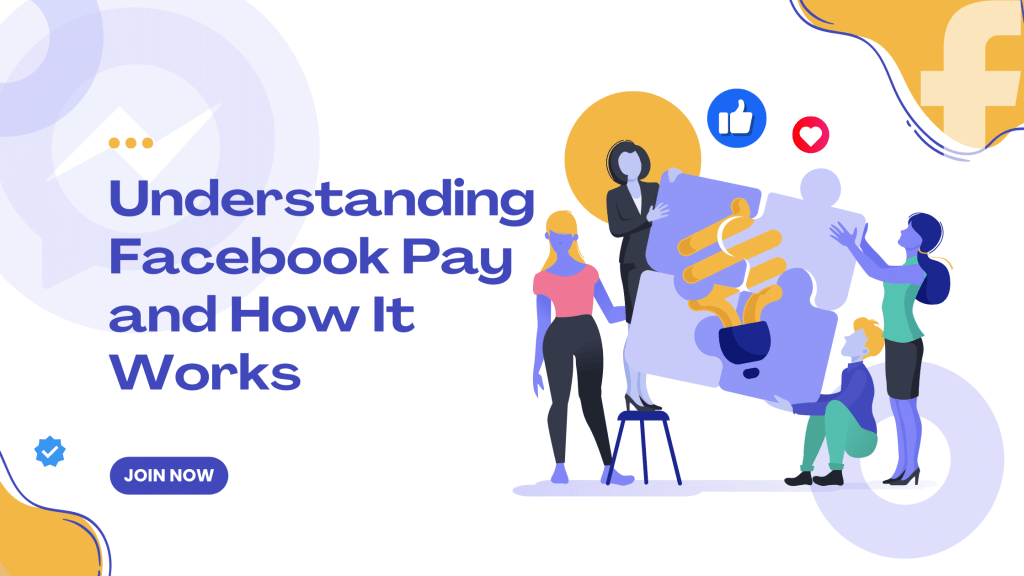In the digital age, convenience and security are paramount when it comes to online transactions. Facebook, a leading social media platform, has introduced Facebook Pay to streamline payments across its family of apps, including Facebook, Messenger, Instagram, and WhatsApp. This innovative payment system aims to provide users with a seamless and secure payment experience. Let’s delve into the details of Facebook Pay and how it works.
Introduction to Facebook Pay
Facebook Pay now known as Meta Pay, is a payment service that allows users to make transactions, shop, donate to causes, and send money to others within the Facebook ecosystem. It offers a centralized platform for managing payment methods, transaction history, and settings across multiple apps. With Facebook Pay, users can add their preferred payment method once and use it across various Facebook apps, eliminating the need to re-enter payment information repeatedly.
Key Features of Facebook Pay
- Convenience: Users can set up Facebook Pay app-by-app or choose to use it across apps where available, providing flexibility in managing payments.
- Security: Facebook Pay is designed to securely store and encrypt card and bank account numbers, with additional security layers such as PIN or biometric recognition for transactions.
- Real-time Support: Users can access real-time customer support via live chat in the US, ensuring assistance when needed.
- Payment Methods: Facebook Pay supports major credit and debit cards, as well as PayPal, ensuring widespread compatibility for users.
How to setup Facebook Pay & How Facebook Pay works ?
Setting up Facebook Pay is straightforward. Users need to add their payment method—such as a credit card, debit card, or PayPal account—to their Facebook account. Once linked, they can initiate transactions with just a few taps.
For Users
- Ease of Use: With Facebook Pay, your payment, shipping, and contact information are stored securely, enabling quick checkouts and transactions.
- Security: Facebook Pay offers several layers of security, including the option to create a unique PIN or use device biometrics like fingerprint or face ID for individual payments.
- Cross-App Functionality: Once set up on one app, Facebook Pay can be used seamlessly across other apps in the Facebook family without the need to re-enter payment information.
For Businesses
- Integration: Businesses can integrate Facebook Pay as a checkout option on their websites, starting with Shopify merchants, with plans to expand further.
- Instant Deposits: Payments are usually deposited into the business’s account immediately, with any delays being reviewed within 24 hours.
- No Additional Cost: Facebook Pay does not charge businesses or consumers any fees for transactions.
Security Measures
Facebook Pay prioritizes security by encrypting payment information, monitoring for unauthorized activity, and offering additional authentication options like PIN or biometric recognition. This ensures that users’ payment details are safeguarded during transactions.
Facebook Pay: The Pros and Cons
Like any service, Facebook Pay has its pros and cons. Its simplicity, cost-effectiveness, and integration across Facebook’s apps make it an appealing choice for businesses. However, limitations exist, such as its current unavailability outside of Facebook’s apps (excluding Shopify) and potential complications in managing multiple payment options.
Facebook Pay vs. Paypal and World
While Facebook Pay is a strong contender in the digital payment space, it’s not without competition. However, its integration within the Facebook ecosystem gives it a unique advantage, especially for businesses whose primary sales channels are social media platforms. The absence of fees for sending or receiving money further sweetens the deal for small merchants.
Future Plans and Expansion
While Facebook Pay initially rolls out on Facebook and Messenger in the US, the platform aims to extend its services to Instagram and WhatsApp over time. This expansion will provide a more comprehensive payment experience for users across different apps within the Facebook ecosystem.
Conclusion
In conclusion, Facebook Pay represents a significant step towards simplifying and securing online payments within the Facebook family of apps. By offering a convenient, secure, and consistent payment experience, Facebook Pay aims to enhance user experience and facilitate seamless transactions across its platforms. As Facebook continues to develop and refine its payment services, users can expect further improvements and features to make their online transactions more efficient and secure.By understanding how Facebook Pay works and its key features, users can leverage this payment service to enhance their shopping, donation, and money transfer experiences within the Facebook ecosystem.


Your blog on understanding Facebook Pay is enlightening! Clear explanations make complex topics accessible. Thank you for sharing!